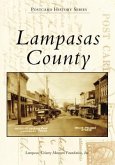Established in 1837 out of Stephen F. Austins original colony, Fayette Countys roots reach back in Texas history to the days of Mexican empresarios and native Indian tribes, spanning the boom period of 19th century European migration and colonization and stretching into the earliest days of 20th century America. It is the quintessential Texas county made up of vibrant, diverse cultures and unique communities. Originally settled by Americans from the southern United States, its later development was influenced and led by first German and then Czech immigrants escaping the European revolutions and economic hardships in search of the definitive American Dream.
Hinweis: Dieser Artikel kann nur an eine deutsche Lieferadresse ausgeliefert werden.
Hinweis: Dieser Artikel kann nur an eine deutsche Lieferadresse ausgeliefert werden.








